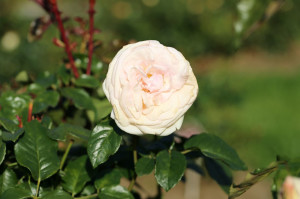 While gardeners in the north pull in their potted tropical plants in early October, gardeners in the South keep enjoying blooms all year round. Gardeners in the southwestern states may not have the beautiful autumnal leaf color, but their succulents are sculptural and hardy. Gardeners from all around the country may feud as to where the best gardening can be had, but when it comes down to it, you should embrace your region’s unique plants and cultivate the plant that thrives.
While gardeners in the north pull in their potted tropical plants in early October, gardeners in the South keep enjoying blooms all year round. Gardeners in the southwestern states may not have the beautiful autumnal leaf color, but their succulents are sculptural and hardy. Gardeners from all around the country may feud as to where the best gardening can be had, but when it comes down to it, you should embrace your region’s unique plants and cultivate the plant that thrives.
Plants that are native to your region or cultivated especially for your region will give you the best blooms and hardiest growth. Start with those plants and then you can experiment with whatever other plants you may wish to add. If those secondary plants don’t fare so well, you’ll still have some hardy and easy-care plants left out there to fill in the holes. In order to find your region’s best native plants for gardening you can contact your state’s local Department of Natural Resources. Talk with local landscapers about their best pics that thrive in your region and look around the city at what plants seem to fare the best.
Each region serves up its own delicacy of plants. While the North may look forward to each season’s guaranteed arrivals, the South has consistency and some surprises, too. Fragrant and flavorful plants like lilac, rhubarb and heather may not bloom in the South, but the Southern landscape enjoys the most glorious azaleas, lavender, crepe myrtle, and southern magnolias. Cacti and succulents welcome you to the Southwest and Maples in the Northeast. Each region embraces its flavor of America. Just as diverse are the people of the country, so are its plants and gardens.
Whether your plants grow in dry sand or wet marshes, a classical garden marker can draw attention to their beauty. A stainless steel classical garden marker will withstand Minnesota snows and Louisiana moisture. Plant markers will mark the spot where the tulips will rise up through the soil and will give each rose bush its own individuality. A rose is not just a rose. Their hues and fragrances vary and they each have their own interesting name. Plant markers can give your garden personality when you put a name to your plant’s leaves and blooms. Even in the coldest northern winter your garden will give off a warmth of spirit as your garden markers stand tall next to the withered stems of fall and wait for new growth to sprout in the spring.
Kincaid Plant Markers will thrive in any climate. No need to research soil type, humidity or the most likely week for the first frost. Our plant markers will stay resilient through the seasons without rusting or fading. Whether you garden in the North, South, East or West a classical garden marker can raise your garden from ordinary to upscale.
